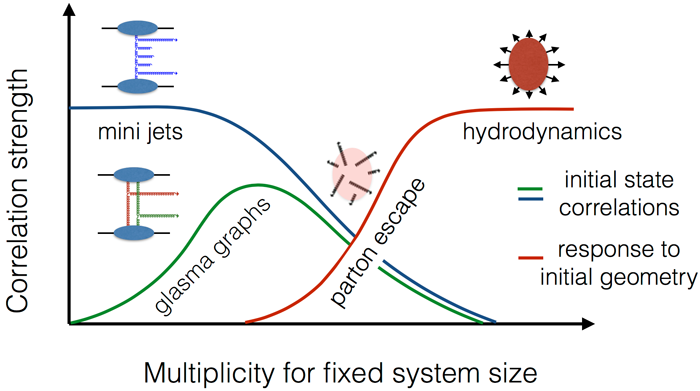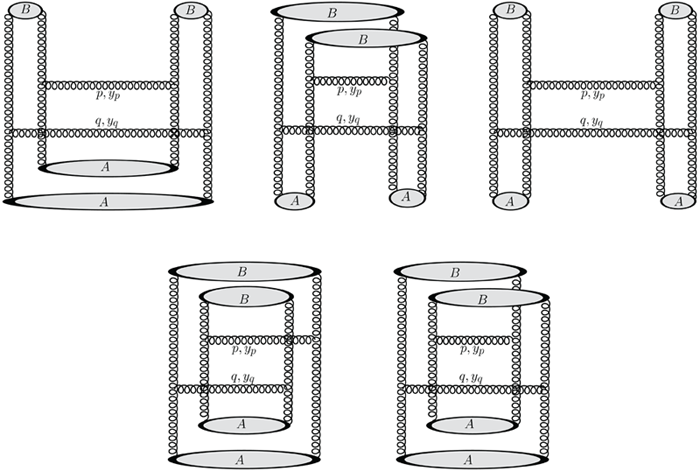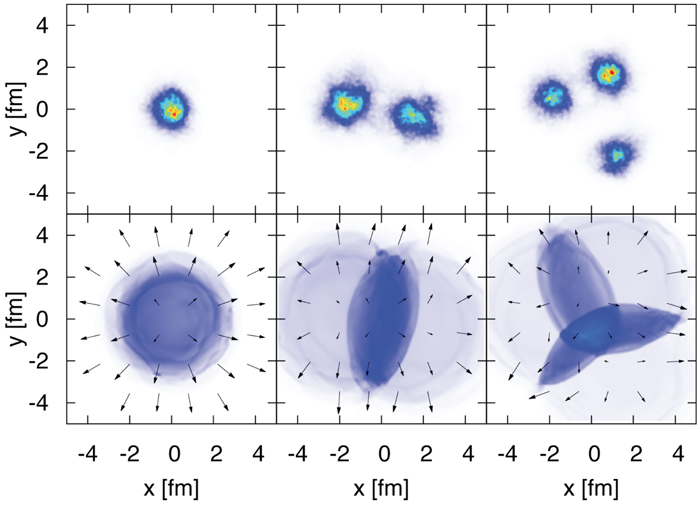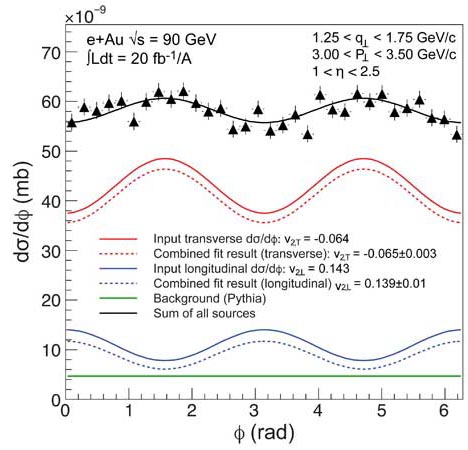INT Program INT-19-1b
Origins of Correlations in High Energy Collisions
April 29 - May 24, 2019
Highlights
The program "Origins of Correlations in High Energy Collisions" focused on the physical origins of multi-particle correlations in high energy collisions of hadrons and nuclei, as well as in electron-hadron/nucleus collisions. Strong focus lay on the understanding of 2- and 4- particle correlations in collisions of protons with heavy nuclei (and other protons) at RHIC and LHC, as well as in collisions of other very light nuclei with heavy nuclei at RHIC. The main question, still under intense scrutiny at this point, is whether the main driver of the observed momentum anisotropies in multi-particle correlation observables is a result of final state interactions that are affected by the system's initial geometry, or if it reflects intrinsic initial momentum correlations. Also the physics relevant to multi-particle correlations in electron-ion collisions (relevant for the planned electron ion collider - EIC) and the relation to p+p/A collisions was discussed.
The program began with a three day workshop to review the status of the field and to establish a solid baseline for the discussions in the forthcoming weeks. About half of the presentations in the workshop were of experimental nature with reports from all major experiments at RHIC and LHC. The rest of week 1 and week 2 focused on the understanding of multi-particle correlations in small collision systems within the color glass condensate and other initial momentum correlation frameworks. In the third week we discussed related physics relevant to an electron ion collider, including e.g. anisotropies in dijet production in e+p and e+A collisions. Week 4 focused on the contribution from final state effects, described in a variety of ways, including kinetic theory and hydrodynamics, and in particular the problem of describing the early time non-equilibrium dynamics and potential transition to a thermalized medium.

Plot of the relevance of various contributions to the azimuthal anisotropy observed in nuclear collision systems with varying final particle multiplicity (but fixed system size). At the lowest multiplicity final state effects are expected to be negligible and the main contribution should come from intrinsic momentum anisotropies in the particle production mechanism. For the largest multiplicities the systems are very dense and strong final state interactions, e.g. described by hydrodynamics, are strongest.
The exact values of multiplicity on the horizontal axis are not known at present.
Reference: Initial state and pre-equilibrium effects in small systems
By S. Schlichting.
arXiv:1601.01177 [hep-ph].
10.1016/j.nuclphysa.2016.02.026.
Nucl.Phys. A956 (2016) 216-221.

Diagrams with different color contractions contributing to two-particle production. These lead to azimuthal anisotropies in two-particle correlations in collisions of e.g. p+p and p+A.
Reference: Glasma flux tubes and the near side ridge phenomenon at RHIC
By Adrian Dumitru, Francois Gelis, Larry McLerran, Raju Venugopalan.
arXiv:0804.3858 [hep-ph].
10.1016/j.nuclphysa.2008.06.012.
Nucl.Phys. A810 (2008) 91-108.

Energy density distributions in the plane transverse to the beam line for p+Au (left) d+Au (center) and 3He+Au (right) collisions at 200 GeV center of mass energy. The top panels show the distributions immediately after the collisions, the bottom panels after a finite evolution time using relativistic hydrodynamic simulations. The arrows indicate the local flow velocities. One can see that the initial geometry is converted into a momentum anisotropy by means of the pressure gradients.
Reference: Origins of collectivity in small systems
By Bjoern Schenke.
arXiv:1704.03914 [nucl-th].
10.1016/j.nuclphysa.2017.05.017.
Nucl.Phys. A967 (2017) 105-112.

The correlator of two Wilson lines (one in the center, the other at the plotted coordinate) in a system of constant color charge density at two different values of Bjorken x. This could be the center of a nucleus for example. The evolution from the low to high energy was performed using numerical solutions of the JIMWLK renormalization group equations. One can see that the correlation length decreases as the inverse of the saturation scale, Qs, which is growing towards smaller x.
Reference: Renormalization group evolution of multi-gluon correlators in high energy QCD
By Adrian Dumitru, Jamal Jalilian-Marian, Tuomas Lappi, Bjoern Schenke, Raju Venugopalan.
arXiv:1108.4764 [hep-ph].
10.1016/j.physletb.2011.11.002.
Phys.Lett. B706 (2011) 219-224.

Angular dependence of inclusive dijet production in 90 GeV center of mass energy e+A collisions. Such measurements allow the extraction of the linearly polarized gluon distribution in nuclei. The figure shows the result of a fit of combined signal and background to a data sample with an integrated luminosity of 10 fb-1/A.
Reference: Measuring the Weizsäcker-Williams distribution of linearly polarized gluons at an electron-ion collider through dijet azimuthal asymmetries
By Adrian Dumitru, Vladimir Skokov, Thomas Ullrich.
arXiv:1809.02615 [hep-ph].
10.1103/PhysRevC.99.015204.
Phys.Rev. C99 (2019) no.1, 015204.